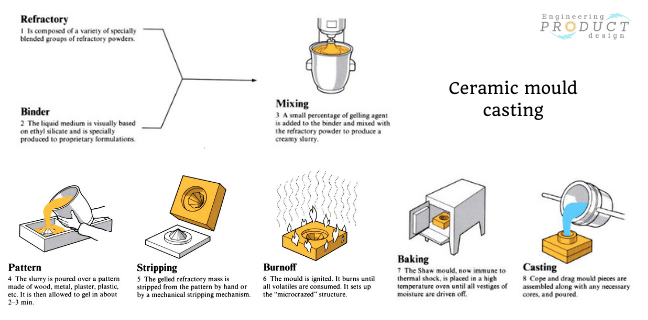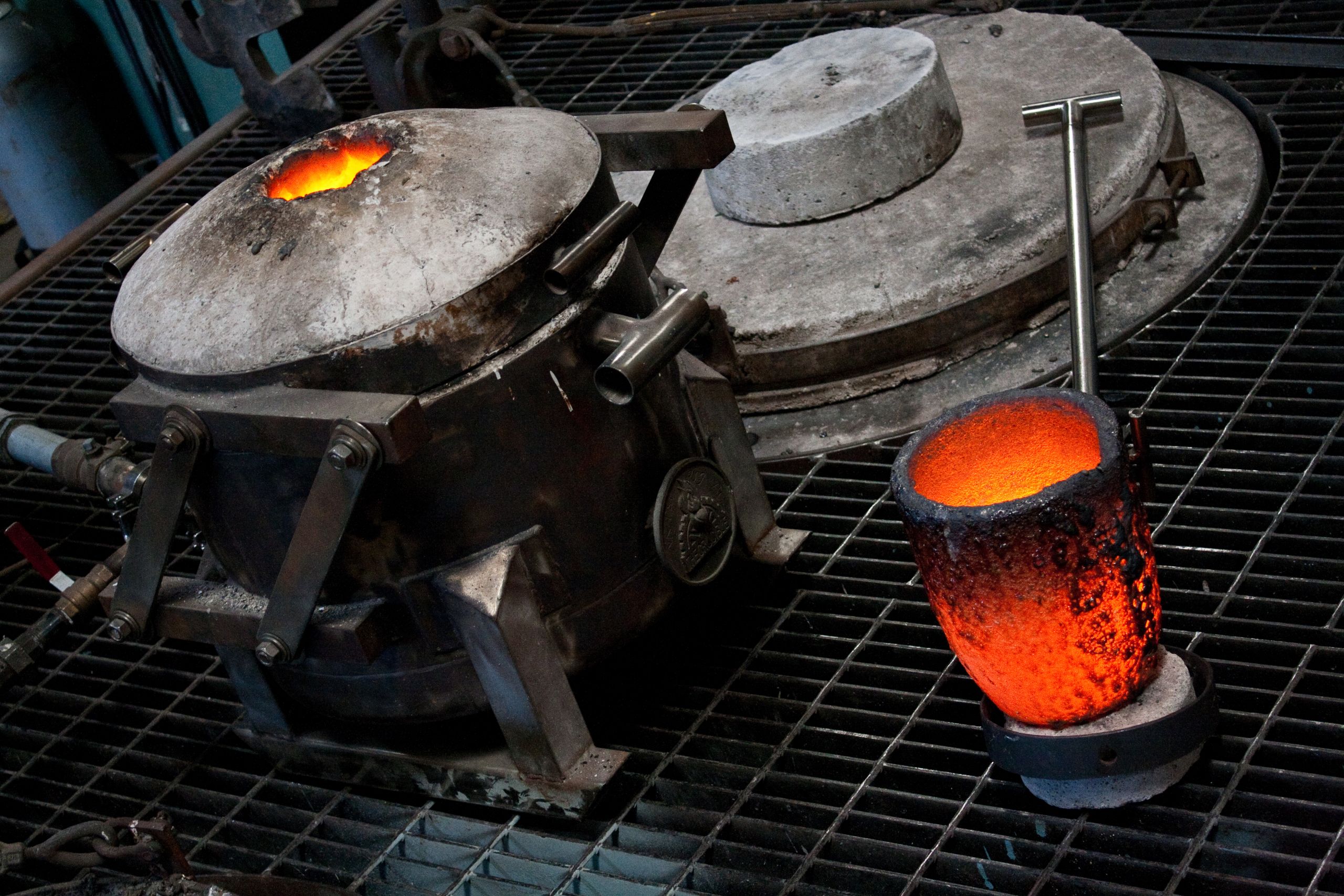A Deep Study the Different Types of Metal Casting and Their Uses
Metal Casting encompasses various strategies, each customized for particular applications and requirements. From the economical sand casting technique to the precision of financial investment casting, each process has unique advantages. Die casting stands out in high-volume production scenarios, while shed foam casting introduces cutting-edge style possibilities. In addition, permanent mold and mildew casting is recognized for its toughness. Understanding these methods opens up a home window into their functional uses and effects in different industries. What lies below the surface of these spreading methods?
Sand Spreading: A Affordable and functional Method
Numerous casting techniques exist, sand spreading remains one of the most flexible and affordable strategies in the metalworking industry. This approach employs a blend of sand and a binding agent to produce mold and mildews, allowing for the manufacturing of components in varied sizes and shapes. Sand casting is specifically useful for little to tool manufacturing runs, as it calls for very little ahead of time financial investment in tooling compared to other casting techniques.
The procedure starts with the production of a mold, where molten steel is gathered to form the preferred item once cooled. Its flexibility allows making use of various steels, including iron, steel, and aluminum. Furthermore, sand spreading can fit complicated geometries, making it appropriate for a variety of applications, from vehicle elements to complex artistic items. Overall, sand casting's efficiency and versatility solidify its importance in the manufacturing landscape.
Financial Investment Spreading: Precision and Information for Intricate Forms
Investment casting stands out as an approach renowned for its ability to produce very described and complex components. This procedure involves creating a wax pattern that is coated with a ceramic shell, which is then warmed to get rid of the wax and harden the covering. The outcome is a specific mold that can record intricate geometric shapes with remarkable precision.
This casting strategy is especially useful for producing parts with slim walls, great features, and limited tolerances, making it optimal for industries such as aerospace, automotive, and clinical tools. Investment casting accommodates a selection of steels, consisting of stainless-steel, light weight aluminum, and titanium, allowing suppliers to satisfy details product requirements.
Additionally, the procedure lessens machining needs post-casting, which can boost effectiveness and lower manufacturing expenses. Overall, investment casting is a recommended option for applications where precision and detail are paramount.
Pass Away Casting: High-Volume Production With Excellent Surface Area End Up

Pass away spreading is a highly effective manufacturing procedure that masters generating huge quantities of steel get rid of outstanding surface area coatings. This approach includes forcing liquified metal into a mold dental caries under high stress, permitting fast production cycles and harmony in the ended up products. Generally used products include magnesium, zinc, and light weight aluminum, which provide outstanding mechanical residential or commercial properties and corrosion resistance.
Pass away casting is especially beneficial for industries such as automotive, electronics, and customer products, where accuracy and top quality are extremely important. The process allows browse around here detailed layouts, decreasing the requirement for added machining and completing procedures. Furthermore, the smooth surface areas created via die casting frequently call for minimal blog here post-processing, causing reduced general manufacturing prices. As a high-volume production strategy, pass away spreading is perfect for producers seeking efficiency without compromising on high quality, making it a recommended option for numerous applications across numerous industries.
Lost Foam Spreading: Innovative Approach for Intricate Styles
Lost foam spreading transforms the manufacturing of intricate steel components by utilizing an unique procedure that gets rid of the demand for typical molds. Rather than standard mold-making, this method utilizes a foam pattern that is coated with a refractory material. As soon as the pattern is established, liquified steel is put straight into the mold and mildew, creating the foam to vaporize and leave behind an accurate tooth cavity for the metal to load. This ingenious approach permits complex layouts and thorough attributes that might be challenging to achieve with other casting approaches.
Furthermore, shed foam casting can lower waste and energy consumption, making it an ecologically pleasant choice. Industries such as aerospace and auto advantage considerably from this technique, as it supports the creation of lightweight elements with complicated geometries. In general, shed foam casting stands apart for its ability to provide premium, tailored steel components successfully.
Irreversible Mold And Mildew Spreading: Sturdiness and Uniformity in Metal Components
Long-term mold and mildew casting is an extremely reliable approach for generating consistent and resilient steel components, leveraging reusable mold and mildews that are generally made from metals such as iron or steel. This casting process involves pouring molten steel right into these molds, which are preheated to enhance product high quality and lower flaws. Using recyclable molds not just minimizes waste but additionally permits higher production rates, making it financially useful for makers.
The resulting parts display superb dimensional precision and surface area coating, making them suitable for applications in automotive, aerospace, and commercial machinery. In addition, irreversible mold and mildew casting can suit a selection of alloys, additionally broadening its adaptability. The toughness of the actors components is enhanced due to the controlled air conditioning prices that advertise finer grain frameworks. Overall, this casting method attracts attention for its ability to produce top notch metal parts that fulfill strenuous efficiency criteria, ensuring reliability popular browse this site settings.
Regularly Asked Questions
What Materials Can Be Utilized in Various Steel Casting Procedures?

Numerous products can be utilized in Metal Casting procedures, consisting of aluminum, bronze, zinc, and iron. Each material supplies distinct residential or commercial properties, influencing the spreading approach's effectiveness, strength, and viability for various applications in manufacturing.
Just How Do Casting Techniques Affect the Mechanical Characteristics of Metals?
Casting techniques substantially influence the mechanical homes of metals, affecting aspects like strength, solidity, and ductility. Variants in cooling down prices and mold and mildew materials can result in various microstructures, inevitably influencing the performance of the final item.
What Are the Environmental Effects of Metal Casting Processes?
Metal Casting processes can lead to air and water air pollution, source depletion, and considerable energy usage (Aluminum Castings). Additionally, the generation of waste products and greenhouse gas emissions significantly affects the atmosphere and contributes to climate change
How Do You Pick the Right Casting Technique for a Project?
Choosing the best spreading technique involves evaluating task demands, product homes, complexity, and production quantity. Factors like expense efficiency, coating high quality, and preparation also play crucial roles in establishing the most ideal method.
What Safety and security Precautions Should Be Taken Throughout Metal Casting Procedures?
Throughout Metal Casting procedures, safety and security preventative measures include using safety equipment, guaranteeing appropriate air flow, conducting devices assessments, maintaining a clean work area, and having emergency situation procedures in area to take care of prospective hazards like burns or hazardous fumes.
From the economical sand casting technique to the precision of investment spreading, each procedure has distinct benefits. Die spreading is an extremely effective production procedure that excels in producing large volumes of metal parts with remarkable surface area finishes. Lost foam spreading changes the production of complex metal parts by making use of a distinct process that removes the need for conventional molds (Aluminum Foundry). Permanent mold and mildew spreading is a highly effective technique for producing regular and sturdy metal parts, leveraging recyclable molds that are usually made from metals such as iron or steel. Different products can be used in Metal Casting procedures, including light weight aluminum, zinc, iron, and bronze